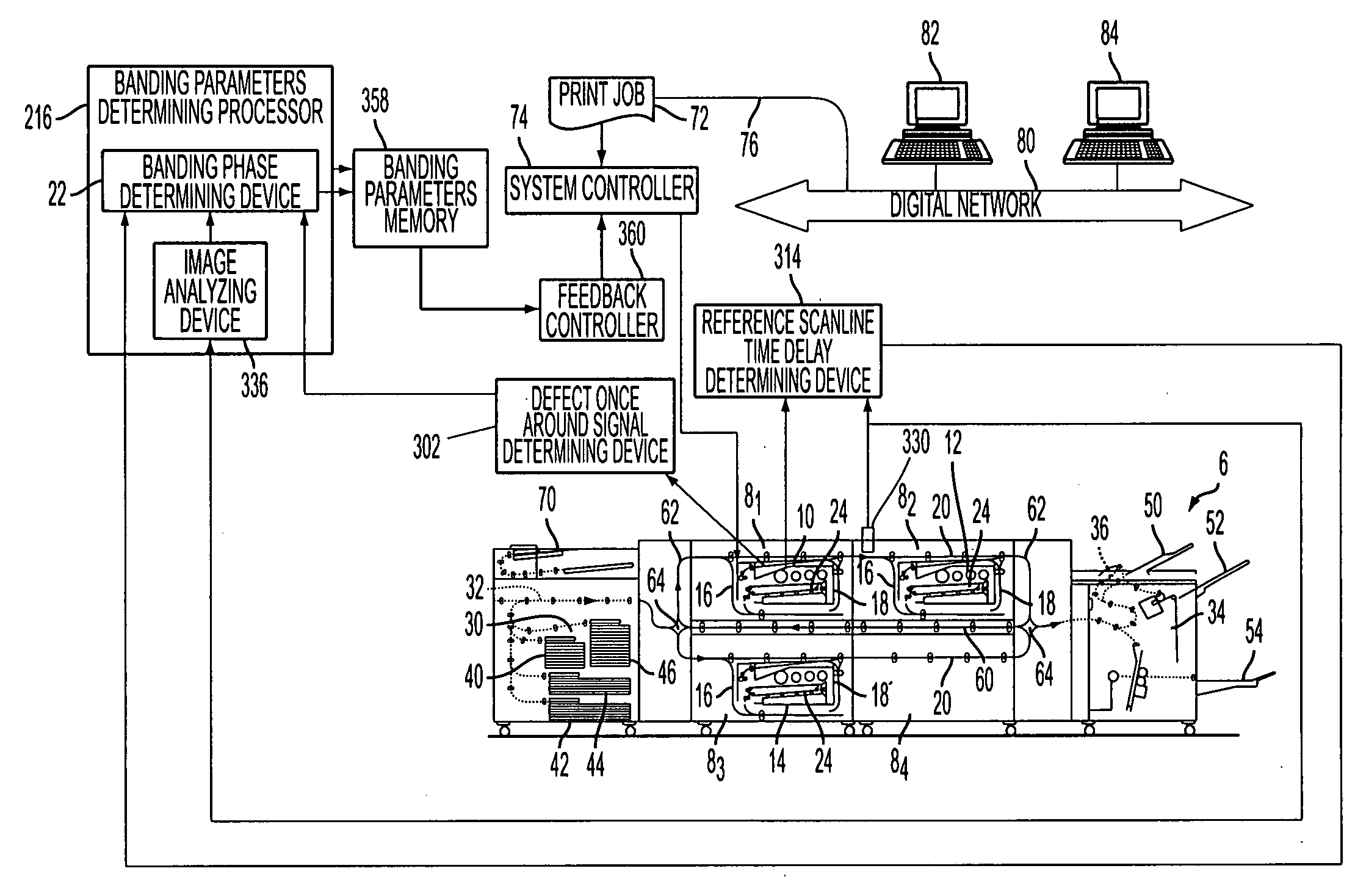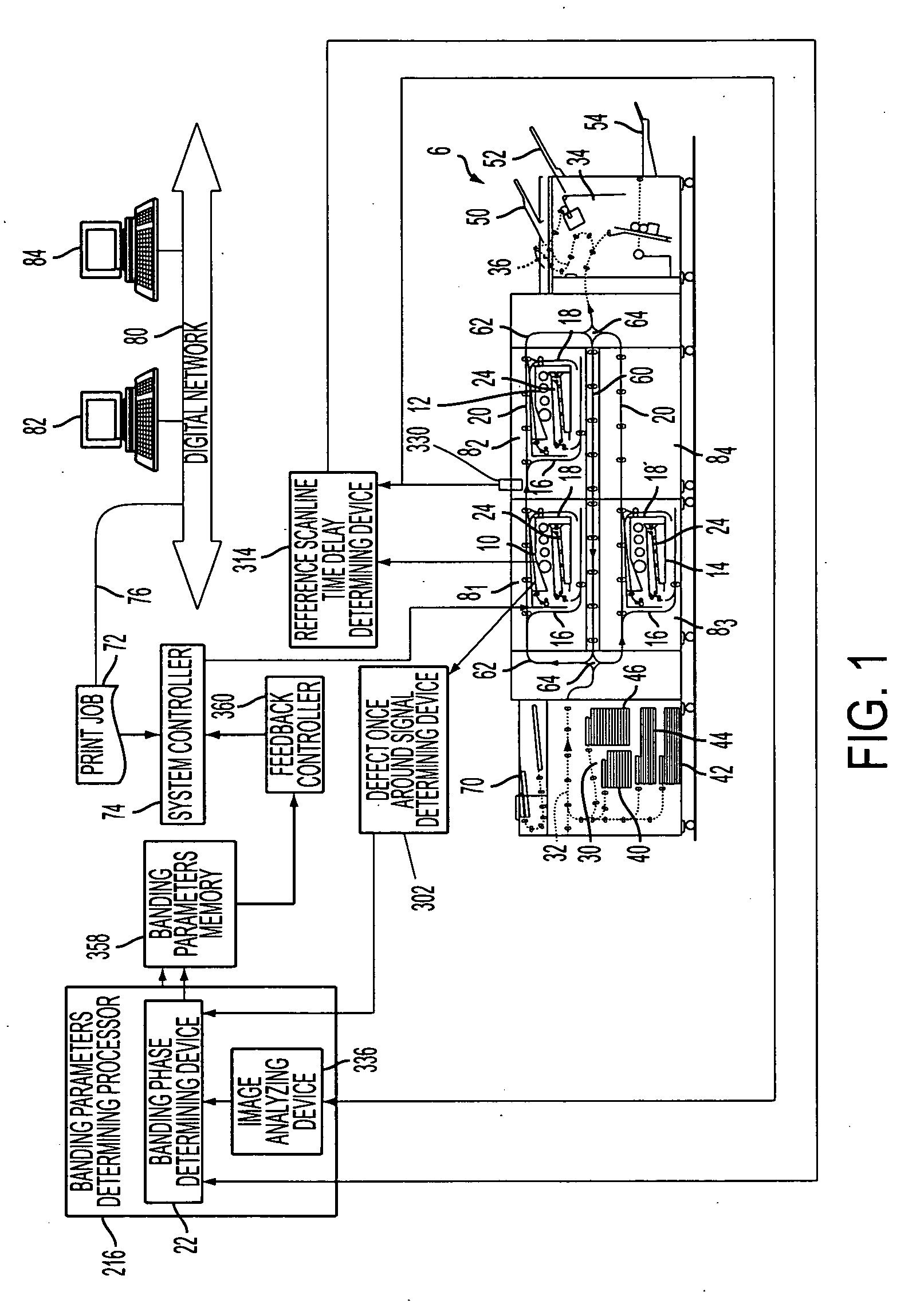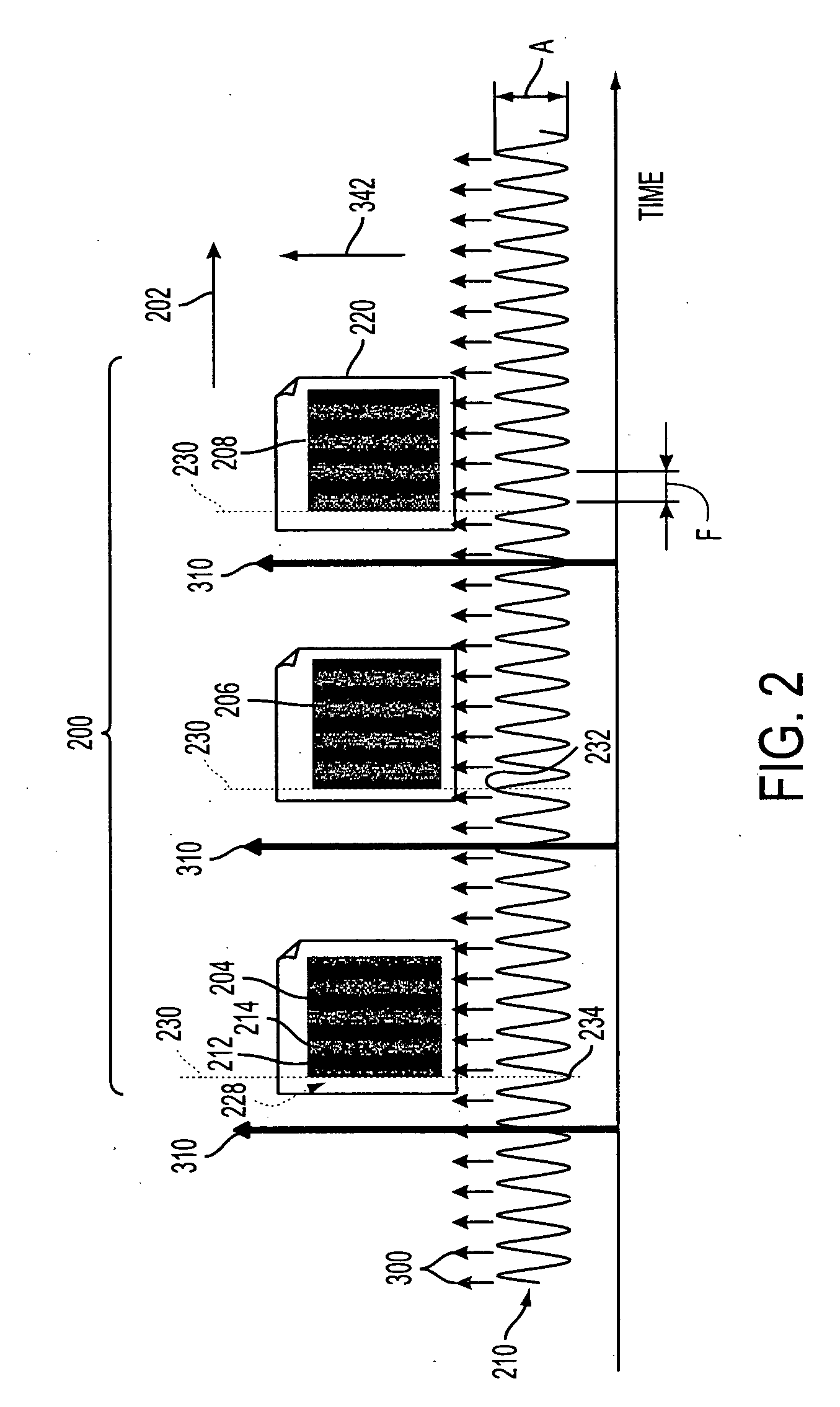Systems and methods to measure banding print defects
a banding and defect technology, applied in the field of document processing systems, can solve the problems of banding, banding can occur, and the periodic band is generally not synchronized with the image, and the line spacing variation is one of the most visible and undesirable artifacts
- Summary
- Abstract
- Description
- Claims
- Application Information
AI Technical Summary
Benefits of technology
Problems solved by technology
Method used
Image
Examples
Embodiment Construction
[0043] With reference to FIG. 1, an example printing or document processing system 6 includes first, second, . . . , nth marking engine processing units 81, 82, 83, . . . , 8n each including an associated first, second, . . . , nth marking or print engines or devices 10, 12, 14 and associated entry and exit inverter / bypasses 16, 18. In some embodiments, marking engines are removable. For example, in FIG. 1, an integrated marking engine and entry and exit inverter / bypasses of the processing unit 84 are shown as removed, leaving only a forward or upper paper path 20. In this manner, for example, the functional marking engine portion can be removed for repair, or can be replaced to effectuate an upgrade or modification of the printing system 6. While three marking engines 10, 12, 14 are illustrated (with the fourth marking engine being removed), the number of marking engines can be one, two, three, four, five, or more. Providing at least two marking engines typically provides enhanced ...
PUM
 Login to View More
Login to View More Abstract
Description
Claims
Application Information
 Login to View More
Login to View More - R&D
- Intellectual Property
- Life Sciences
- Materials
- Tech Scout
- Unparalleled Data Quality
- Higher Quality Content
- 60% Fewer Hallucinations
Browse by: Latest US Patents, China's latest patents, Technical Efficacy Thesaurus, Application Domain, Technology Topic, Popular Technical Reports.
© 2025 PatSnap. All rights reserved.Legal|Privacy policy|Modern Slavery Act Transparency Statement|Sitemap|About US| Contact US: help@patsnap.com



